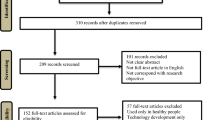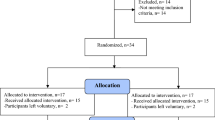Abstract
In the past decade, several arm rehabilitation robots have been developed to assist neurological patients during therapy. Early devices were limited in their number of degrees of freedom and range of motion, whereas newer robots such as the ARMin robot can support the entire arm. Often, these devices are combined with virtual environments to integrate motivating game-like scenarios. Several studies have shown a positive effect of game-playing on therapy outcome by increasing motivation. In addition, we assume that practicing highly functional movements can further enhance therapy outcome by facilitating the transfer of motor abilities acquired in therapy to daily life. Therefore, we present a rehabilitation system that enables the training of activities of daily living (ADL) with the support of an assistive robot. Important ADL tasks have been identified and implemented in a virtual environment. A patient-cooperative control strategy with adaptable freedom in timing and space was developed to assist the patient during the task. The technical feasibility and usability of the system was evaluated with seven healthy subjects and three chronic stroke patients.









Similar content being viewed by others
References
Banala SK, Agrawal SK, Scholz JP (2007) Active leg exoskeleton (ALEX) for gait rehabilitation of motor-impaired patients. In: Proceedings of the IEEE international conference on rehabilitation Robotics, Noordwijk, pp 401–407
Bavelier D, Levi DM, Li RW, Dan Y, Hensch TK (2010) Removing brakes on adult brain plasticity: from molecular to behavioral intervention. J Neurosci 45(30):14964–14971
Bayona NA, Bitensky J, Salter K, Teasell R (2005) The role of task specific training in rehabilitation therapies. Top Stroke Rehabil 12:58–65
Butefisch C, Hummelsheim H, Denzler P, Mauritz KH (1995) Repetitive training of isolated movements improves the outcome of motor rehabilitation of the centrally paretic hand. J Neurol Sci 130:59–68
Cai LL, Fong AJ, Otoshi CK, Liang Y, Burdick JW, Roy RR, Edgerton VR (2006) Implications of assist-as-needed robotic step training after a complete spinal cord injury on intrinsic strategies of motor learning. J Neurosci 26(41):564–568
Colgate JE, Brown JM (1994) Factors affecting the Z-width of haptic display. In: Proceedings of the international conference on Robotics and Automation, San Diego, pp 3205–3210
Duschau-Wicke A, von Zitzewitz J, Caprez A, Lnenberger L, Riener R (2009) Path control: a method for patient-cooperative robot-aided gait rehabilitation. IEEE Trans Neural Syst Rehabil Eng 18(1):38–48
Emken JL, Bobrow JE, Reinkensmeyer DJ (2005) Robotic movement training as an optimization problem: designing a controller that assists only as needed. In: Proceedings of the IEEE 9th international conference rehabilitation Robot, pp 307–312
Guidali M, Bchel M, Klamroth V, Nef T, Riener R (2009) Trajectory planning in ADL tasks for an exoskeletal arm rehabilitation robot. In: Proceedings of the European conference on technically assisted rehabilitation, Berlin, pp 20–24
Haggard P, Richardson J (2003) Spatial patterns in the control of human arm movement. Exp Psychol 2:42–62
Holden MK (2005) Virtual environments for motor rehabilitation: review. CyberPsychol Behav 3(8):187–211
Housman SJ, Scott KM, Reinkensmeyer DJ (2009) A randomized controlled clinical trial of gravity-supported, computer-enhanced arm exercise for individuals with severe hemiparesis. Neurorehabil Neural Repair 23(5):505–514
Johnson MJ, Wisneski KJ, Anderson J, Nathan D, Smith RO (2006) Development of ADLER: the activities of daily living exercise robot. In: Proceedings of the biomedical Robotics and Biomechatronic, pp 881–886
Kornell N, Bjork RA (2008) Learning concepts and categories: is spacing the enemy of induction. Psychol Sci 19(6):585–592
Krebs HI (2004) Rehabilitation robotics: pilot trial of a spatial extension for MIT-Manus. J Neuroeng Rehabil 1(5):1–5
Krebs HI, Hogan N, Volpe BT, Aisen ML, Edelstein L, Diels C (1999) Overview of clinical trials with MIT-MANUS: a robot-aided neuro-rehabilitation facility. Technol Health Care 7:419–423
Krebs HI, Palazzolo JJ, Dipietro L, Ferraro M, Krol J, Rannekleiv K, Volpe BT, Hogan N (2003) Rehabilitation robotics: performance-based progressive robot-assisted therapy. Auton Robots 15(1):7–20
Kwakkel G, Wagenaar RC, Koelman TW, Lankhorst GJ, Koetsier JC (1997) Effects of intensity of rehabilitation after stroke. A research synthesis. Stroke 28:1550–1556
Lambercy O, Dovat L, Gassert R, Burdet E, Teo CL, Milner T (2007) A haptic knob for rehabilitation of hand function. IEEE Trans Neural Syst Rehabil Eng 3(15):356–366
Langhammer B, Stanghelle JK (2000) Bobath or motor relearning programme? A comparison of two different approaches of physiotherapy in stroke rehabilitation: a randomised controlled study. Clin Rehabil 14:361–369
Lotze M, Braun C, Birbaumer N, Anders S, Cohen LG (2003) Motor learning elicited by voluntary drive. Brain Behav Evol 126(4):866–872
Loureiro RCV, Harwin WS (2007) Reach & grasp therapy: design and control of a 9-DOF robotic neuro-rehabilitation system. In: Proceedings of the international conference on rehabilitation Robotics, Kyoto, pp 757–763
Lum P, Reinkensmeyer D, Mahoney R, Rymer WZ, Burgar C (2002) Robotic devices for movement therapy after stroke: current status and challenges to clinical acceptance. Top Stroke Rehabil 8(4):40–53
Lum P, Burgar CG, Shor PC, Majmundar M, van der Loos M (2004) Evidence for improved muscle activation patterns after retraining of reaching movements with the MIME robotic system in subjects with post-stroke hemiparesis. IEEE Trans Neural Syst Rehabil Eng 12(2):186–194
Lunenburger L, Colombo G, Riener R, Dietz V (2004) Biofeedback in gait training with the robotic orthosis Lokomat. Eng Med Biol Soc 2:4888–4891
Marchal-Crespo L, Reinkensmeyer DJ (2009) Review of control strategies for robotic movement training after neurologic injury. J NeuroEng Rehabil 6(20):20
Mirelman A, Bonato P, Deutsch JE (2009) Effects of training with a robot-virtual reality system compared with a robot alone one the gait of individuals after stroke. Stroke 40(1):169–174
Nef T, Lum P (2009) Improving backdrivability in geared rehabilitation robots. Med Biol Eng Comput 47(4):441–447
Nef T, Guidali M, Riener R (2009) ARMin III—arm therapy exoskeleton with an ergonomic shoulder actuation. Appl Bionics Biomech 6(2):127–142
Perez MA, Lungholt BK, Nyborg K, Nielsen JB (2004) Motor skill training induces changes in the excitability of the leg cortical area in healthy humans. Exp Brain Res 159(22):197–205
Platz T (2003) Evidence-based arm rehabilitation—a systematic review of the literature [publication in German]. Nervenarzt 74:841–849
Prange GB, Jannink MJA, Groothuis-Oudshoorn CGM, Hermens HJ, IJzerman MJ (2006) Systematic review of the effect of robot-aided therapy on recovery of the hemiparetic arm after stroke. J Rehabil Res Dev 43(2):171–184
Riener R, Lunenburger L, Jezernik S, Anderschitz M, Colombo G, Dietz V (2005) Patient-cooperative strategies for robot-aided treadmill training: first experimental results. IEEE Trans Neural Syst Rehabil Eng 13(3):380–394
Staubli P, Nef T, Klamroth-Marganska V, Riener R (2009) Effects of intensive arm training with the rehabilitation robot ARMin II in chronic stroke patients: four single-cases. J NeuroEng Rehabil 6(1):46–56
Stienen A, Hekman EEG, Prange GB, Jannick M, van der Helm F, van der Kooij H (2009) Dampace: design of an exoskeleton for force-coordination training in upper-extremity rehabilitation. J Med Device 3:031003.1–031003.10
Sugar TG, He J, Koeneman EJ, Koeneman JB, Herman R, Huang H, Schultz RS, Herring DE, Wanberg J, Balasubramanian S, Swenson P, Ward JA (2007) Design and control of RUPERT: a device for robotic upper extremity repetitive therapy. Trans Neural Syst Rehabil Eng 15(3):336–346
Sunderland A, Tinson DJ, Bradley EL, Fletcher D, Langton HR, Wade DT (1992) Enhanced physical therapy improves recovery of arm function after stroke. A randomised clinical trial. Neurol Neursurg Psychiatry 55:530–535
Timmermans AAA, Seelen HAM, Willmann RD, Kingma H (2009) Technology-assisted training of arm-hand skills in stroke: concepts on reacquisition of motor control and therapist guidelines for rehabilitation technology design. J NeuroEng Rehabil 6(1):1
Tsui CS, Gan JQ, Roberts SJ (2009) A self-paced brain-computer interface for controlling a robot simulator: an online event labelling paradigm and an extended Kalman filter based algorithm for online training. Med Biol Eng Comput 47(3):257–265
Wolbrecht E, Chan V, Reinkensmeyer DJ, Bobrow JE (2008) Optimizing compliant, model-based robotic assistance to promote neurorehabilitation. Trans Neural Syst Rehabil Eng 16(3):286-297
Acknowledgements
The authors would like to thank the healthy subjects and especially the patients who participated in this study. We also thank the therapists Anja Kollmar, Olivier Schmid and Daniela Kammerer who trained the patients and gave helpful input and feedback. Furthermore, we thank the Hocoma AG, Volketswil, Switzerland, for their contribution to the development of the hand module. The project was supported by the Swiss Research Foundation NCCR on Neural Plasticity, the Swiss National Science Foundation through the National Centre of Competence in Research Robotics and by the Swiss National Science Foundation (SNF) grant 325200-1260621.
Author information
Authors and Affiliations
Corresponding author
Electronic supplementary material
Below is the link to the electronic supplementary material.
Rights and permissions
About this article
Cite this article
Guidali, M., Duschau-Wicke, A., Broggi, S. et al. A robotic system to train activities of daily living in a virtual environment. Med Biol Eng Comput 49, 1213–1223 (2011). https://doi.org/10.1007/s11517-011-0809-0
Received:
Accepted:
Published:
Issue Date:
DOI: https://doi.org/10.1007/s11517-011-0809-0




